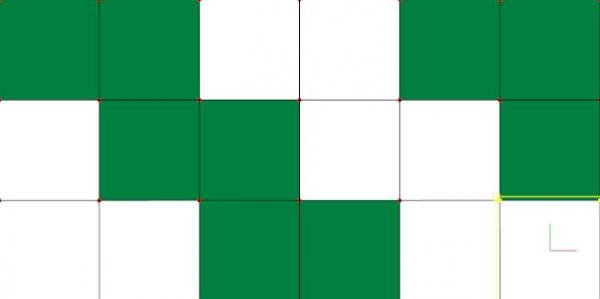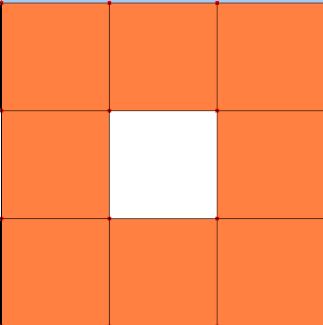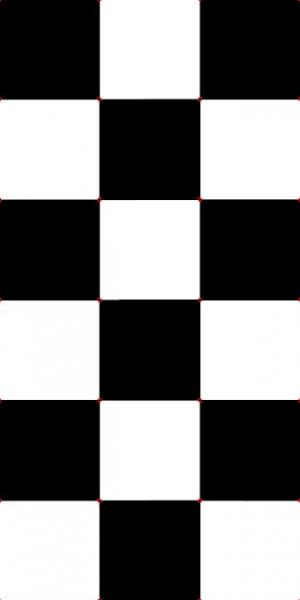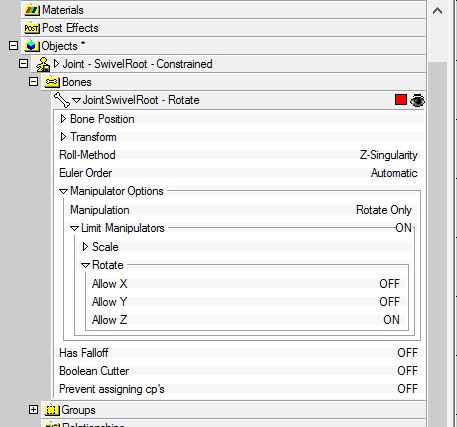
LenseOnLife
*A:M User*-
Posts
45 -
Joined
-
Last visited
Previous Fields
-
Interests
Videographu
-
A:M version
current
-
Hardware Platform
Win 10
-
System Description
Homebuild
-
Short Term Goals
Get competent in making simnple models
-
Mid Term Goals
Good texturing
-
Long Term Goals
Rigging / Animation
-
Self Assessment: Animation Skill
Familiar
-
Self Assessment: Modeling Skill
Familiar
-
Self Assessment: Rigging Skill
Unfamiliar
Profile Information
-
Name
Oliver
LenseOnLife's Achievements

New User (2/10)
0
Reputation
-
Hello everyone, Very comprehensive answers - as always. I just wanted to be sure that I hadn't missed something in terms of grouping patches. For me, the 2-Group approach will work fine. Someday (in the not too distant future), I'll look at expressions, but for now - just 2 groups and use pose sliders to animate the change in colours. Thanks again, Cheers for now, Oliver
-
Hi, Looking again for the Forum Expertise It seems simple - so it probably is - just not for me. Frustratingly so. I'm trying to make up a mosaic and then colour it dynamically through poses. Everything is fine EXCEPT I'm not able to set up the groups. Here area couple of examples of the types of groups that I've been trying to set up without any success. I can't seem to be able to set them up when there is a common CP between what I want in the group and what I want outside the group. 1. A group with only Orange Tiles 2. A Group with only Black Tiles 3. A Group with only Green Tiles Oliver
-
Hi fuchur, Success on a plate at last I've made a quick 'splash and dash' video of the process - how to make up parts into sub-assemblies into assemblies ..... This is very much 'quick and dirty' - will probably make up a proper one on Tuesday for other newbies like myself. MergedPoses.mp4 There was a time that I didn't think it would be possible to make up models from multiple copies of bits 'n pieces - but I've been proven wrong. A:M is quite flexible - just need time to get to know how it works. Thanks again for all your help and not giving up of me. Cheers for now, Oliver
-
Hi fuchur, Much appreciated. It's so easy to get lost in the forest of options - thanks for reminding me of the choreography. Time to go down that route and see how I get on. It is proving to be a very instructive and enjoyable journey As an aside in terms of the pose sliders, I have a feeling that, during the evolution of Animation Master, the psoe sliders have become complex and have lost an ability of being properly encapsulated. Think about how difficult it is to make a clean delete of a pose. Most times, artifacts remain in the model and only a partial deletion happens. This could be reason that the poses don't get handled as cleanly as the groups, bones ......
-
Hello Again, Have to say up front that I've never used any software with such a great and active forum for beginners. Hopefully, before I reach senility, I will be able to help others on the journey. But back to the problem. I've started using the Euler Constraint/Limit today and they get over the problem of a bone rotating too far - as happens when the bone manipulator constraint is switched on. So thank you Fuchur and Robert for setting me down that path. Turned out to be much easier to use that the documentation. An advantage of the simple bone manipulator constraint is that the model can be copied any number of times into a sub-assembly and the constraint works in each and every copy without any problem. It is a joy to use (but for the lack of angle limits and, as Robert mentioned to me earlier that they only work when manipulated manually and not when using target bones .....). So, Euler seems to be the way forward. Going down the Euler Limits road needs a 'Pose Slider (On/Off) / Relationship' and therein lies the problem for me. When a model (part) is copied multiple times into a new model (sub-assembly), then the relationships get overwritten and are lost for all parts except the most recent one to be copied into the sub-assembly. Fuchur has suggested a workaround - rename the pose slider after every copy into the subassembly model. That works, but becomes cumbersome as the sub-assemblies increase in complexity and scope. Also, if I happen to forget to do the rename (and not realise my mistake), then I usually have to go back and reconstruct the new model over again from scratch. As I read back over the above I realised that it was very confusing (even for me after writing it!) so I've made a small video which I hope is clearer MergedPoses.mp4 Q: 1. Is there a reason why relationships are not protected when a model is copied multiple times into a new model? 2. Any possibility that it could be possible to preserve relationships in the future? regards, oliver
-
Hi Robert, As you might guess - I'm still toying with various ways of making assemblies from basic parts. The Pose Slider was handy as it created the constraint (both in axis and extent) automatically within the slider but the main problem was one of workflow. If I forgot to rename a pose after copying in a basic part, then that pose would become 'overwritten' when that part was next copied into the sub-assembly and just about everything would then have to be re-built again from scratch. I was hoping that using bone constraints would get over that problem and it is certainly a cleaner way of doing things (except for that that limitation of it being possible to do a full 360 rotation even when a limit would be desirable - which I hadn't noticed). I'll experiment a little more with these simple bone constraints and build up some complex sub-assemblies to understand the limitations a bit better before looking at Euler. Small steps. Thanks again, Oliver
-
Hi, Just found a video tutorial called TankTurretManipulatorLimits which seems to be doing just what I was thinking and noticed the little running man command button was set - just as you predicted Robert There are loads of little bits and pieces to remember but I'm sure they will eventually become second nature with practice. Hi Fuchur - I've noticed Euler Limits mentioned in a number of posts - that is something that I will have to look into in the not too distant future, but for this particular little project I'm trying to get rid of Pose Sliders and look at alternative options and the simple rotate constraint seems to be just what the doctor ordered.. So Happy days! Another one bites the dust Thanks all, Oliver
-
Hi, Having played around with pose sliders and building sub-assemblies I decided to start working on Bone Constraints. Looked easy enough - first mistake. Looked far too easy. Here is the model that I am using It has 1 bone, and all the CPs are allocated to that bone. Previously, I used a pose slider to allow the model rotate around the bone (i.e. along Z), so now want to do it with a bone constraint. Selected the bone and set up the constraints So far so good. I set up an action to test it out and when I selected it, there was just one ring to manipulate the model as I had hoped. However, I then tried dropping the model into a choreography and when I selected the bone it could be manipulated in all orientations. Is there something that I need to set to enable the constraint in the choreography - like surely you've turned on 'enable bone constraints' or something like that Oliver
-
Hi Steve, I will take up Robert on his invitation but not just yet. Broadband and Skype don't mix here (simply too slow). Also, I need to get a few more things straight in my mind first so that it will be productive. As I've been blindly blundering along I've been making videos of my work as I find that is a great way of slowing myself down and forcing me to check out a solution before I go on to the next piece of the puzzle. Have to say, A:M is turning out to be a lot more enjoyable this time around. Cheers, Oliver
- 10 replies
-
- pose slider
- assemblies
-
(and 2 more)
Tagged with:
-
Hi Rodney / Robert, Rodney: I had thought of Action Objects and it needs a little more time for my head to get around it. But as you say, it won't sort out my problem completely - so now on my list of topics to experiment with as I get more at home with this product. Robert: Your solution works a treat - I copied in 4 assemblies, each assembly made up of 2 basic models with 2 poses - used that 'N' and CTRL trick which really makes life a lot easier when moving these 'parts' around the new model and linking them up as a chain. I have run into a problem whereby one pose slider started interacting with other pose sliders when the angle increases beyond a certain point. I need to look into it a bit more but have a feeling that I'm inadvertently creating negative angles. Consider this thread 'fixed' thanks again for all your help Cheers Oliver P.S. Robert - when you say that you do 'Live Answers Time on Saturdays' - how does that work, particular time on Saturdays - what edge of the universe do you live? I'm in the mountains of South West Ireland - great views, awful broadband
- 10 replies
-
- pose slider
- assemblies
-
(and 2 more)
Tagged with:
-
Hi, A lot of very valuable information there and it will take me time to work through them and then try to remember them! Just wanted to thank all for the assistance while I digest it all - very much appreciated Oliver
- 10 replies
-
- pose slider
- assemblies
-
(and 2 more)
Tagged with:
-
Hi, I think I am causing confusion so have made a short video of what I am doing. Here it is SinglePose.mp4. Although it is not shown in the video clip. I also put the new model into a chor and it also just had the one pose for the second object. Am I wandering down a cul-de-sac with a NoEntry sign that I missed? Regards, Oliver
- 10 replies
-
- pose slider
- assemblies
-
(and 2 more)
Tagged with:
-
Hi, It's quite possible that I'm going down the wrong road but .... Coming from an engineering background I'm used to looking at objects in a modular manner, where the final model is made up of building blocks and that is what I'm trying to do in A:M. I have a model (M1) with 1 bone (B1) and 1 pose slider (PS1). Then I made a second model (M2) and I dragged and dropped M1 into it twice. At this stage, all the groups from M1 are in M2 twice, also there are 2 bones but there is only 1 pose slider (relationship). This means that I can only manipulate one copy of M1 within M2 (the most recently copied version of M1). I tried doing something similar using a choreography and then exporting it as a model but that had problems as well. Obviously I'm missing something very basic in the architecture of A:M. Is it possible to make up building blocks and then make up sub-assemblies and assemblies ....
- 10 replies
-
- pose slider
- assemblies
-
(and 2 more)
Tagged with:
-
Hi Robert, Thanks - that's this thread completed Oliver
-
Hi, Mea Culpa - I'll put it down to 'old age' Here is the correct model file JointTiltSwivel R01.mdl Regards, Oliver P.S. I'm using 64bit on a Windows10















